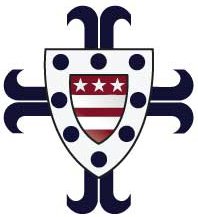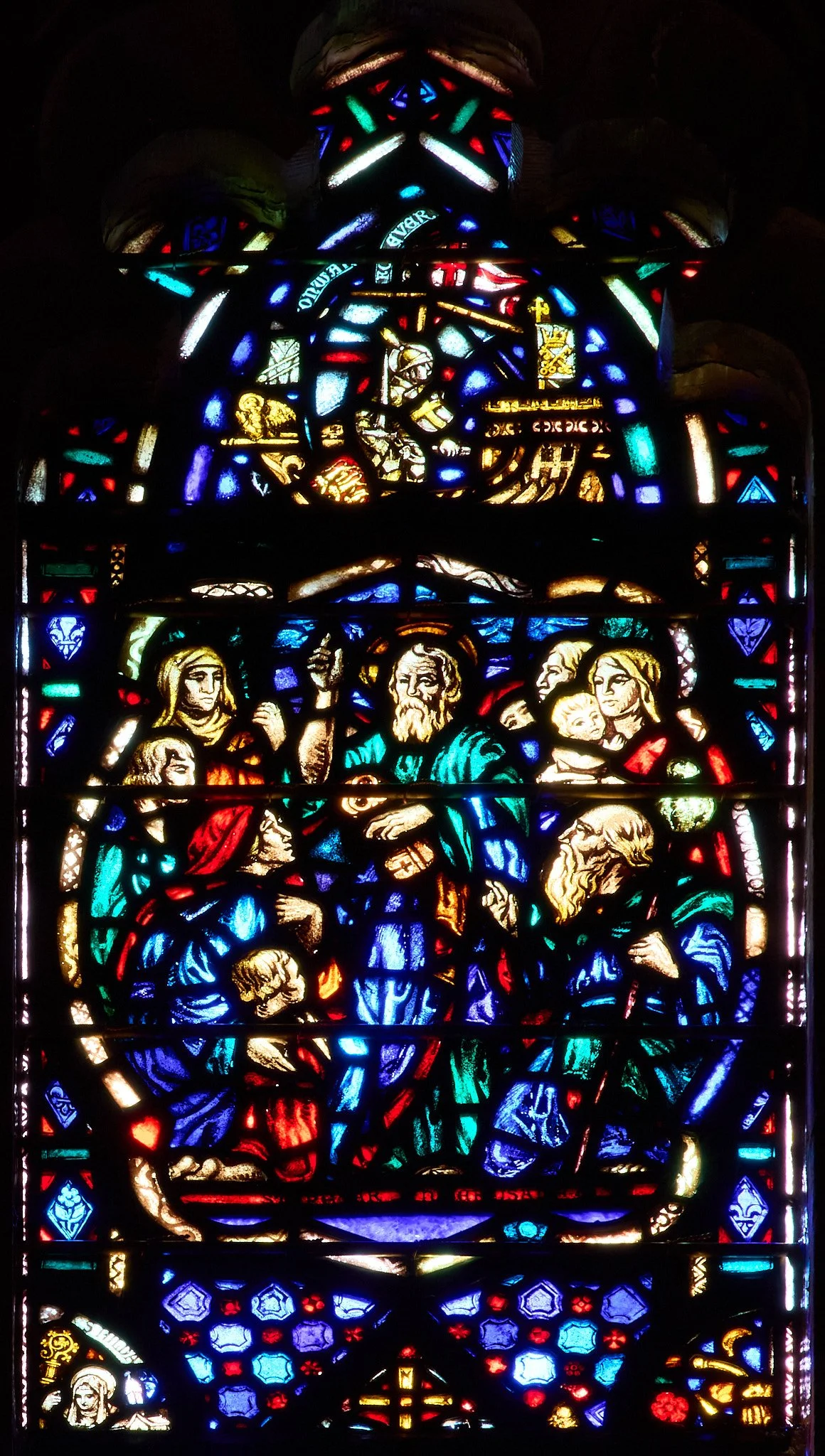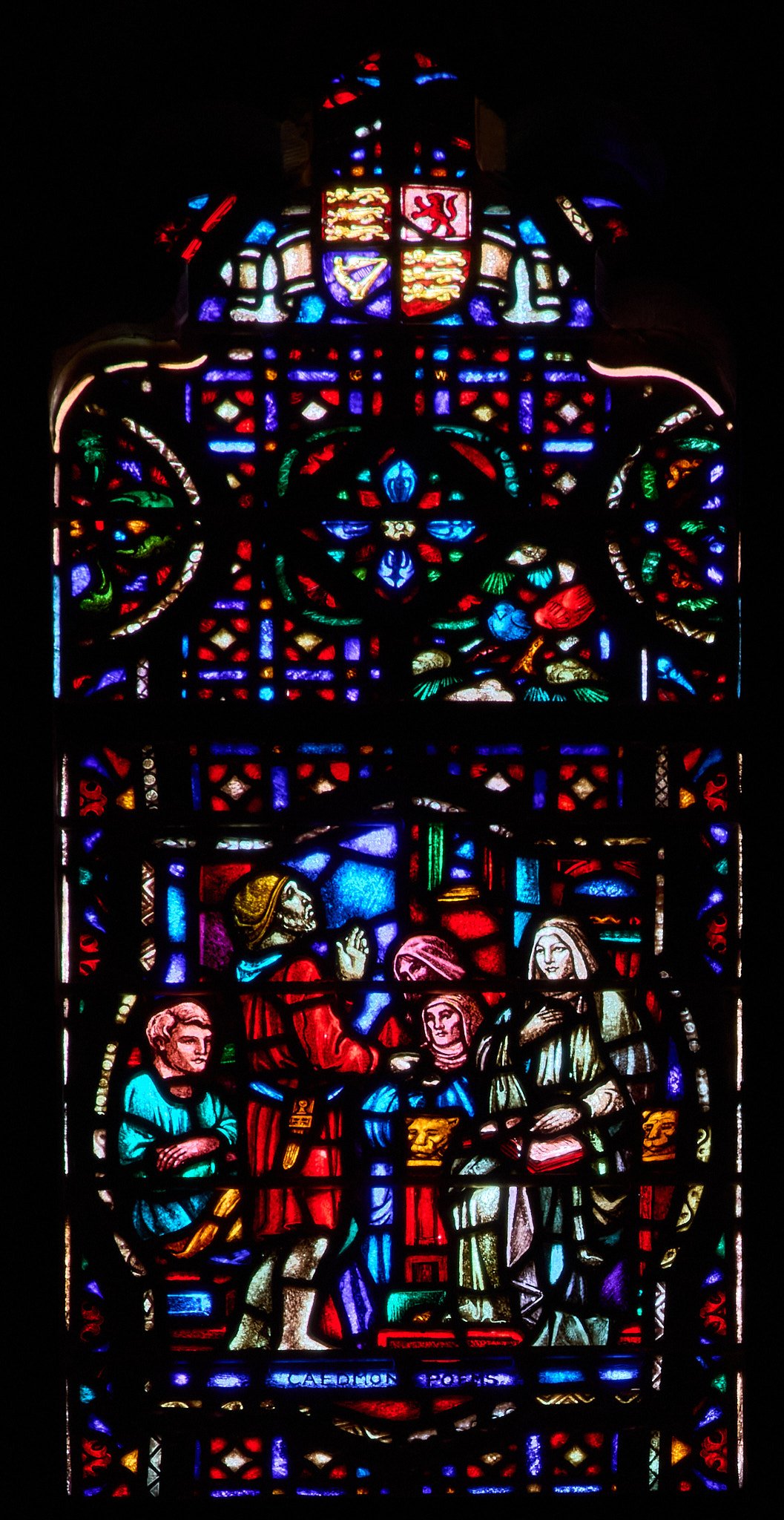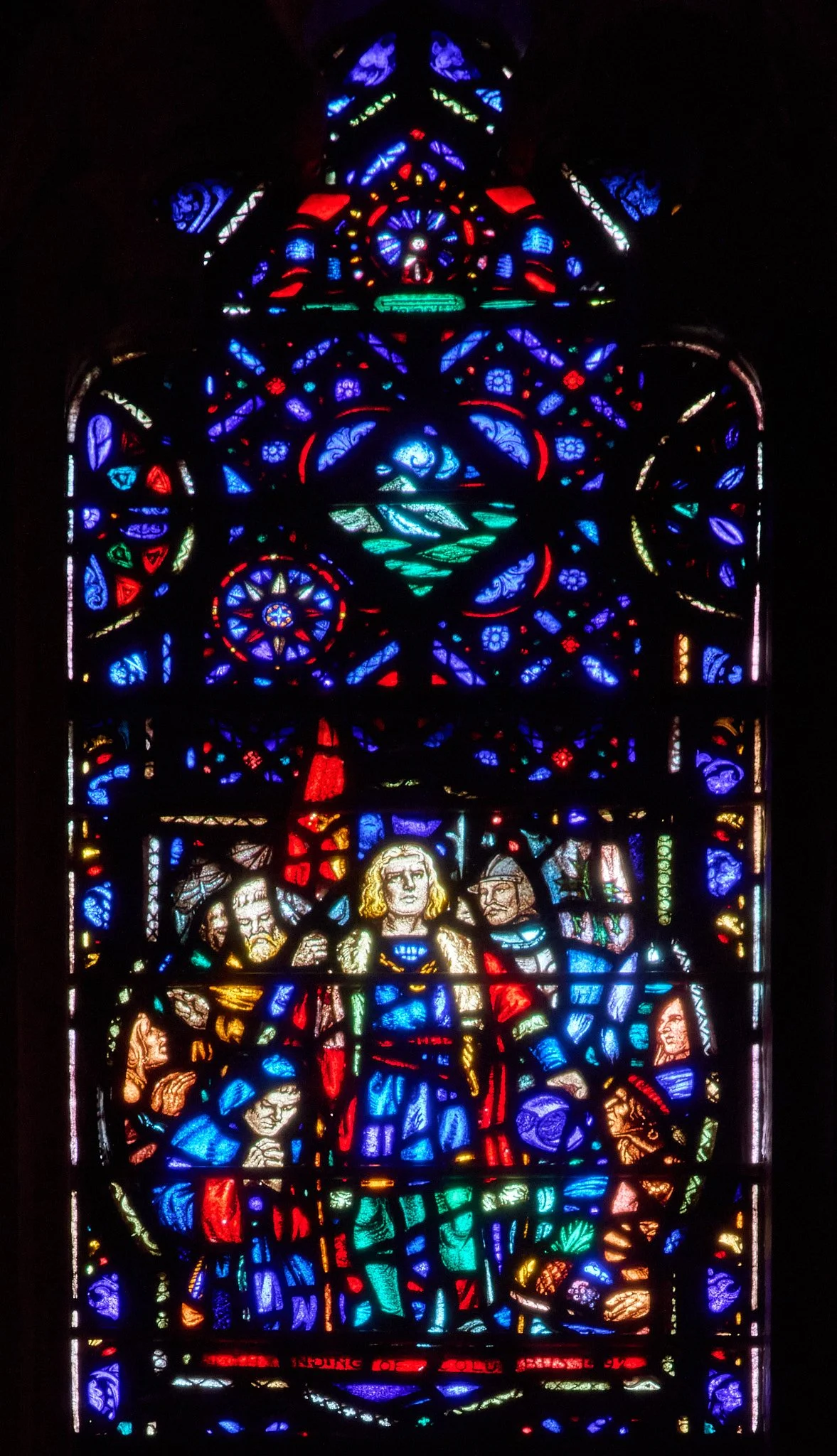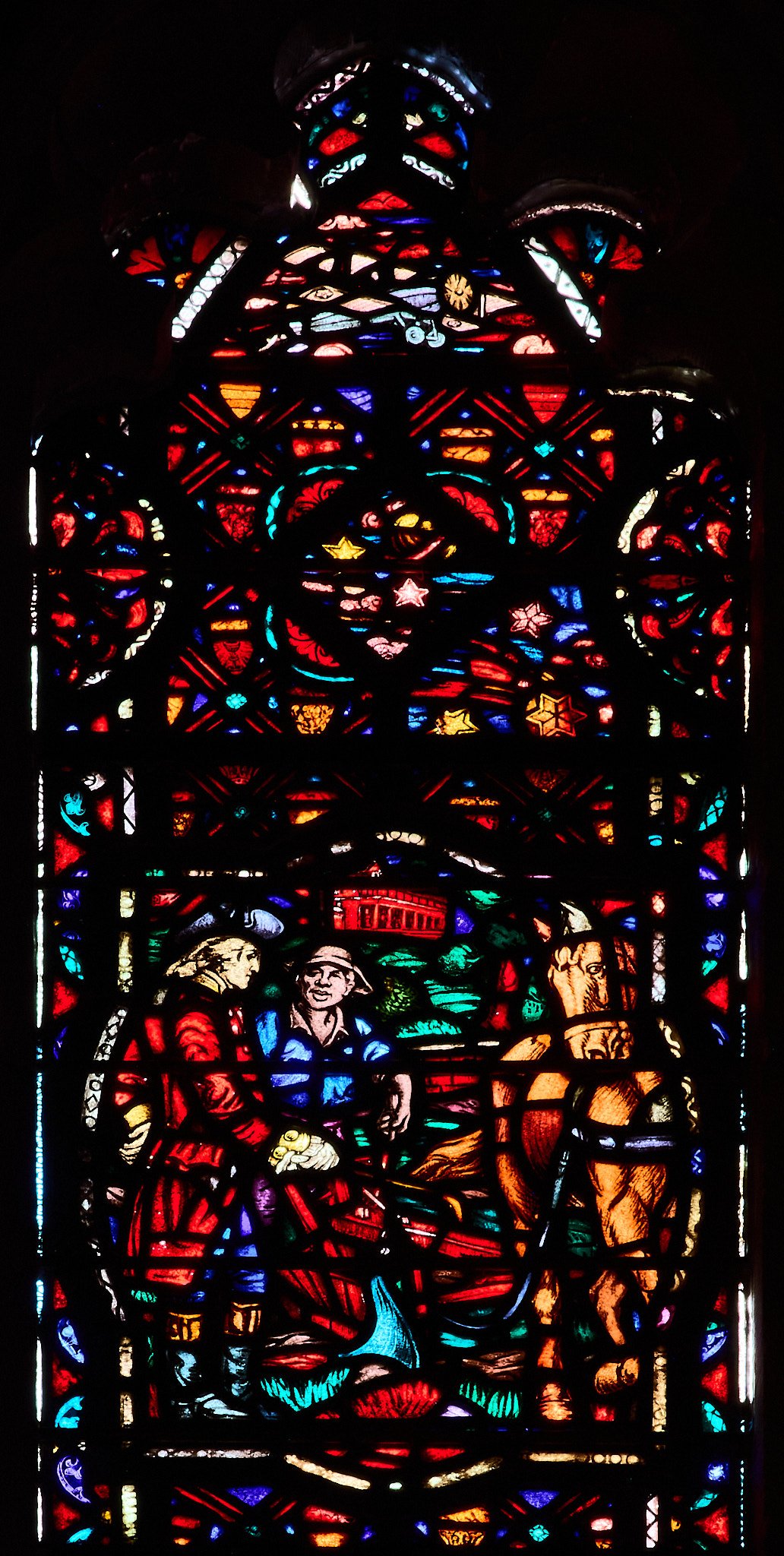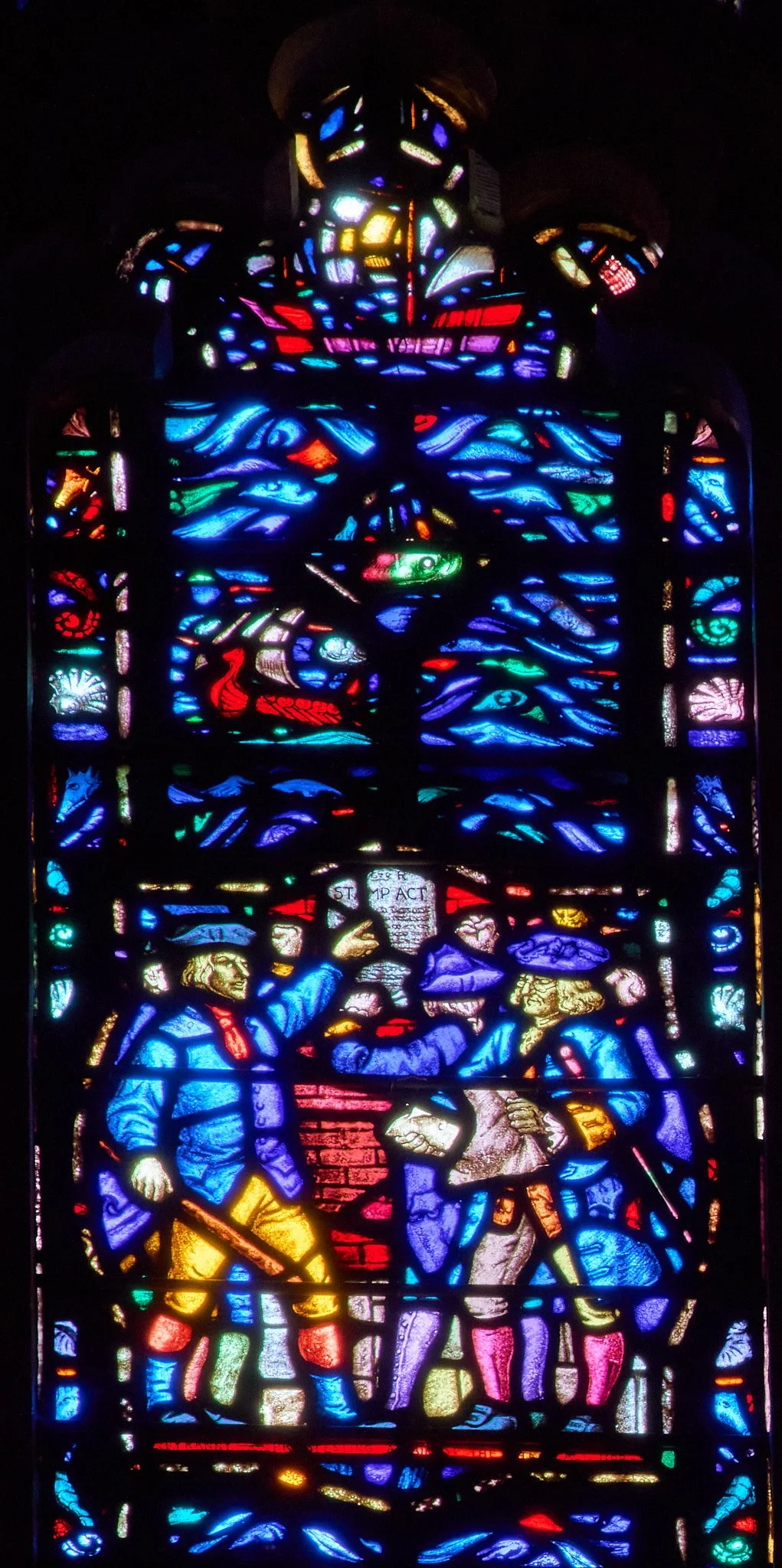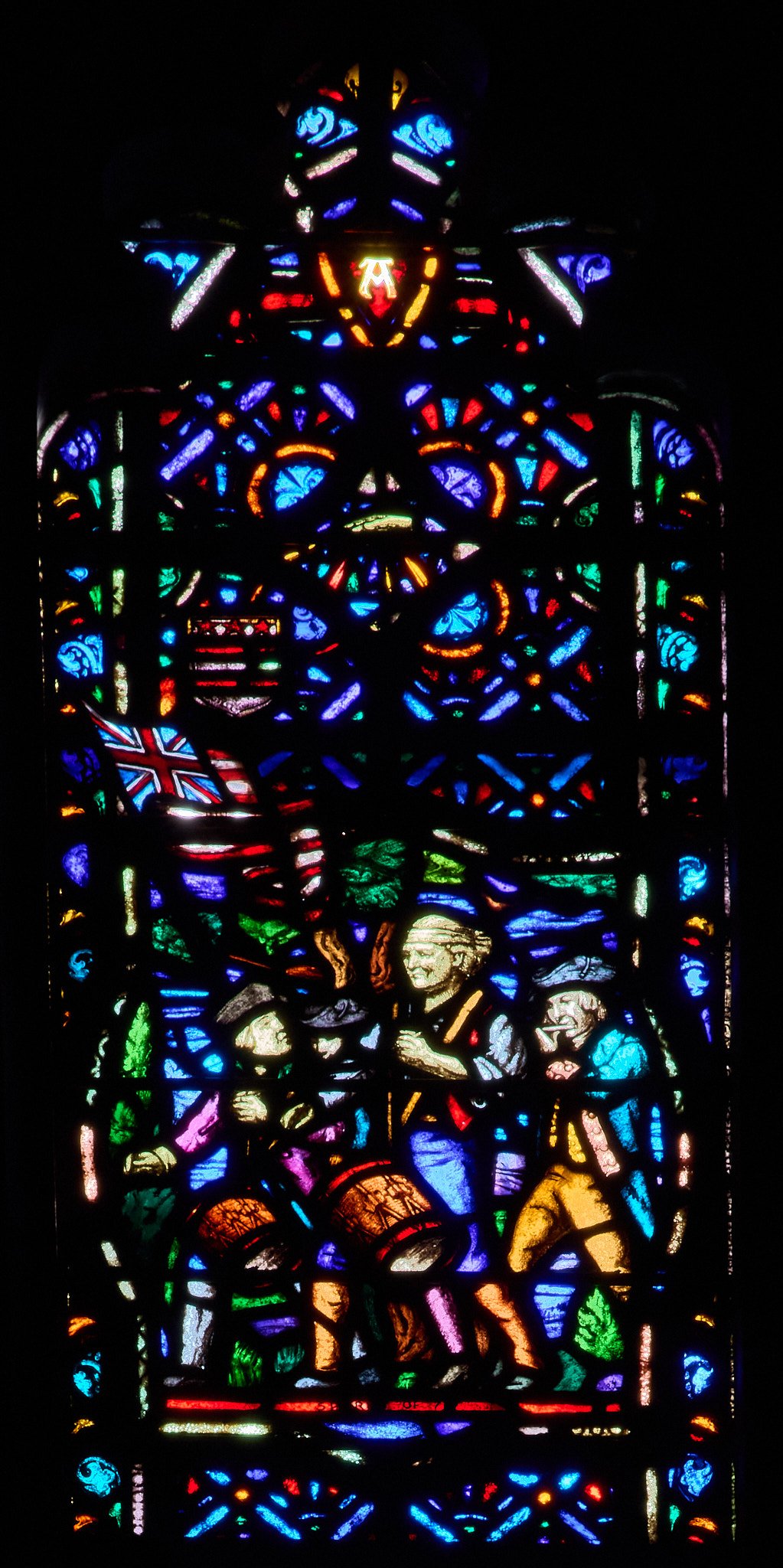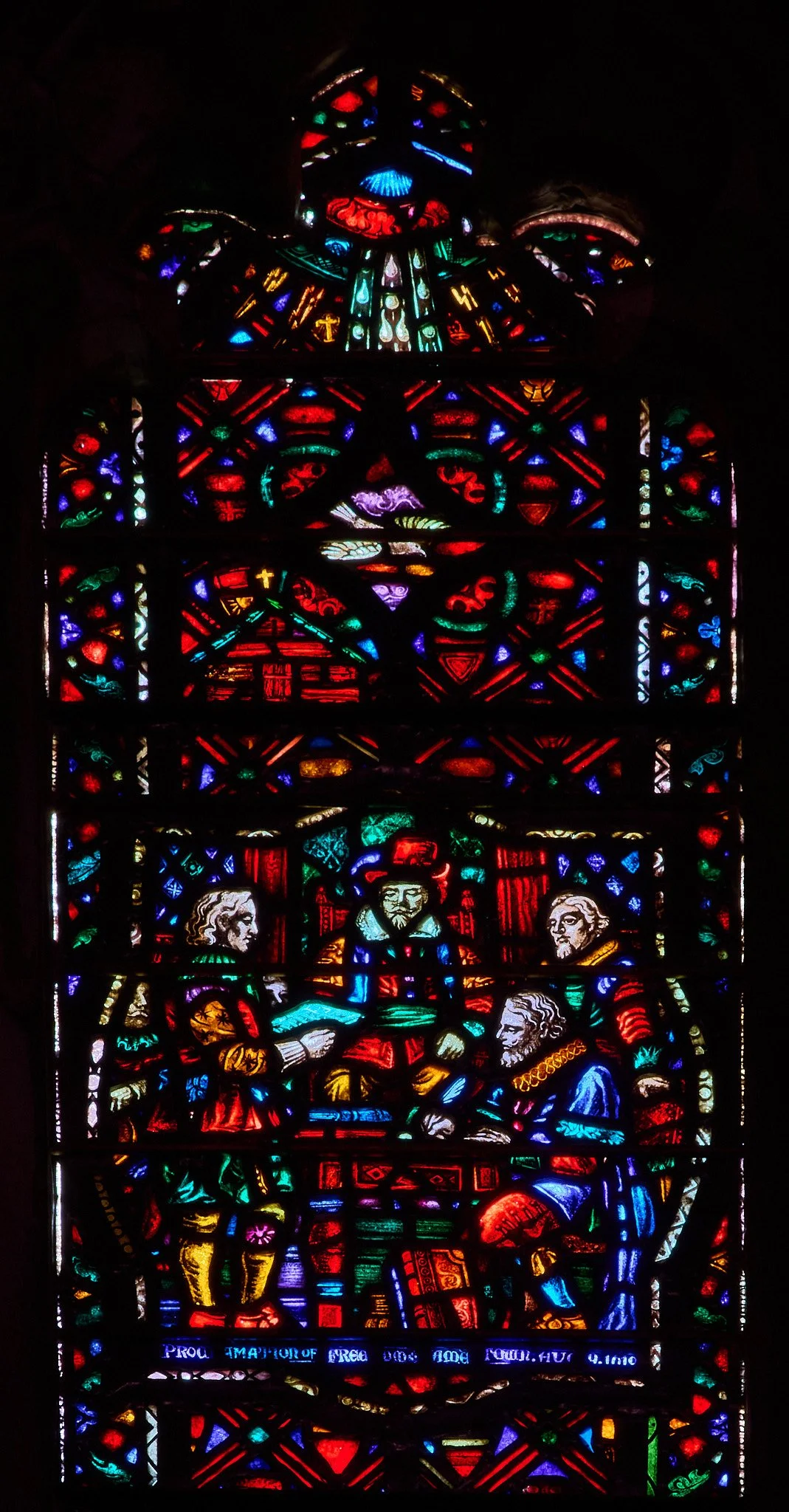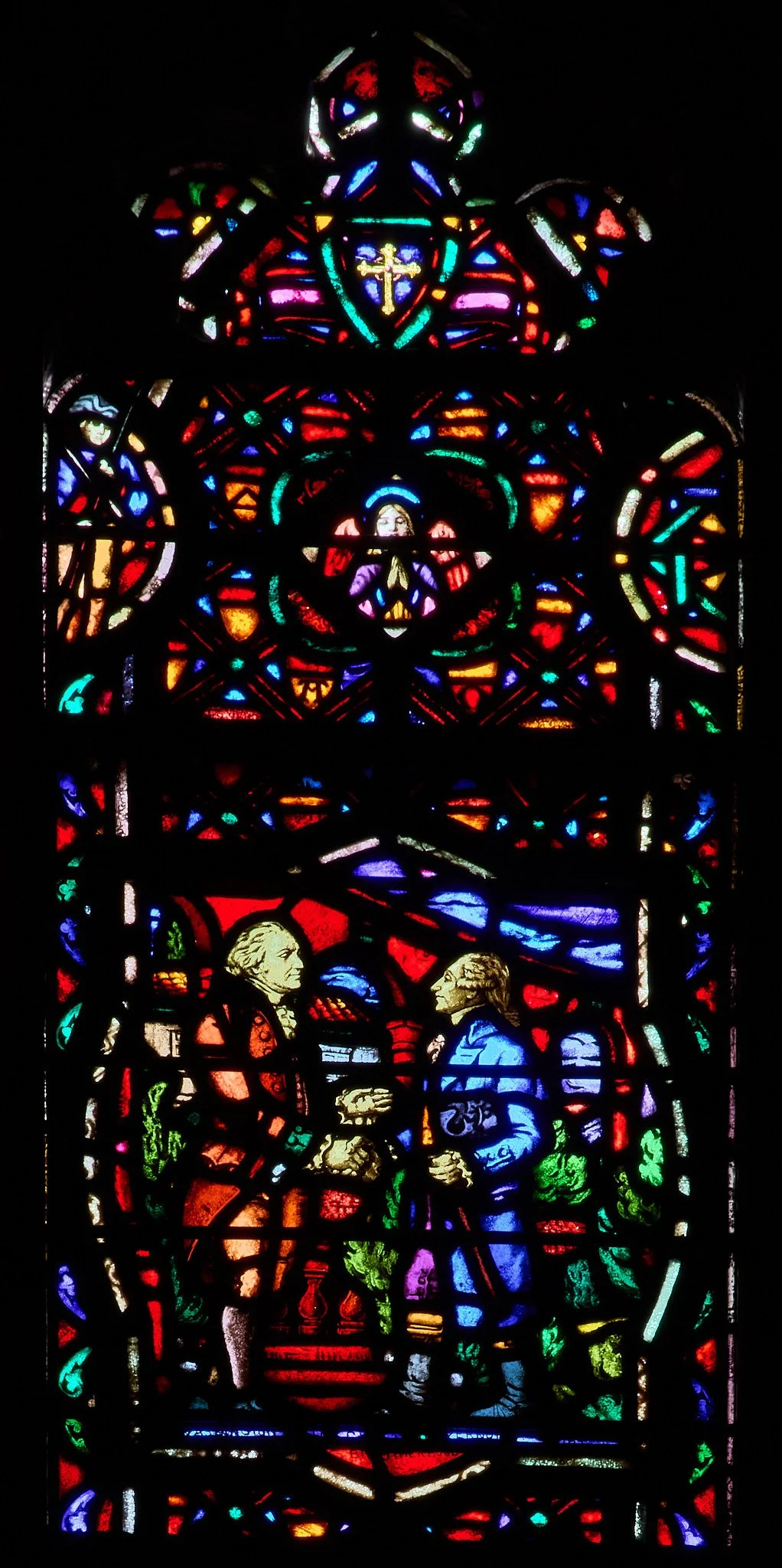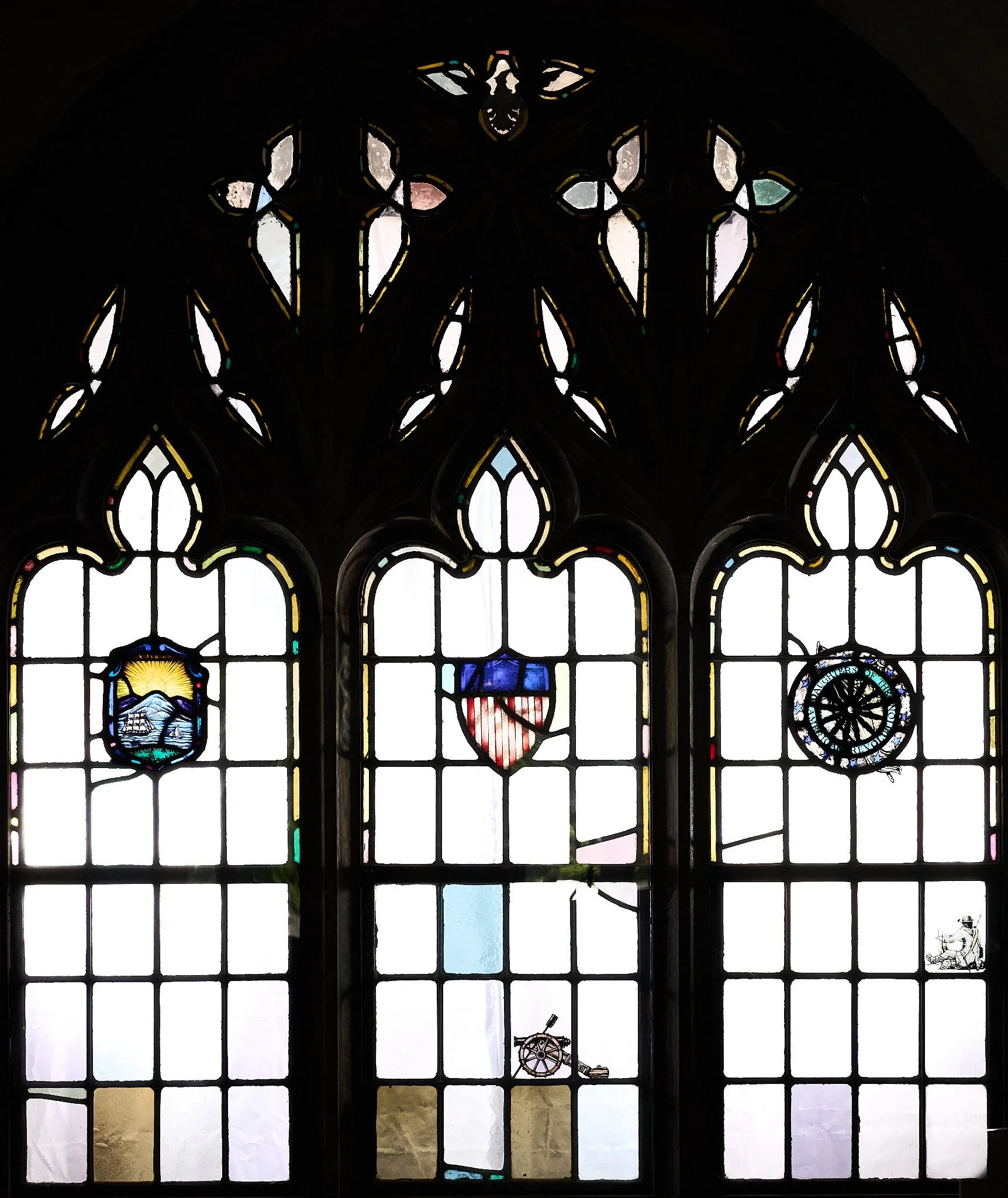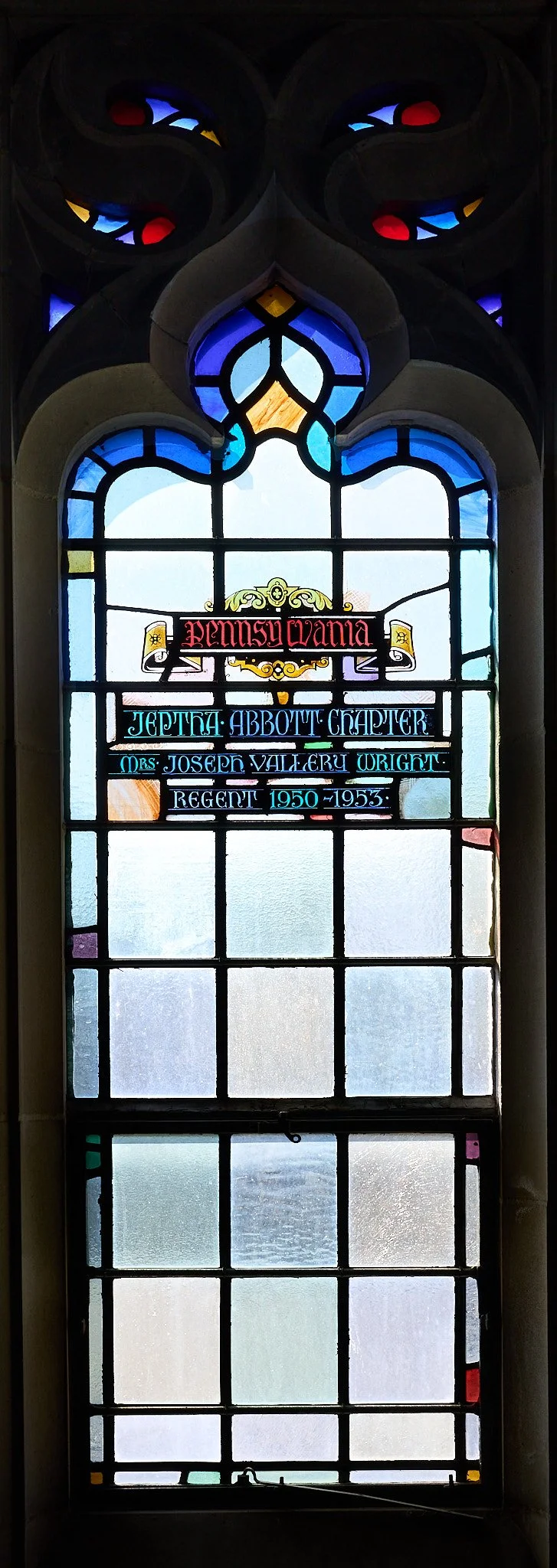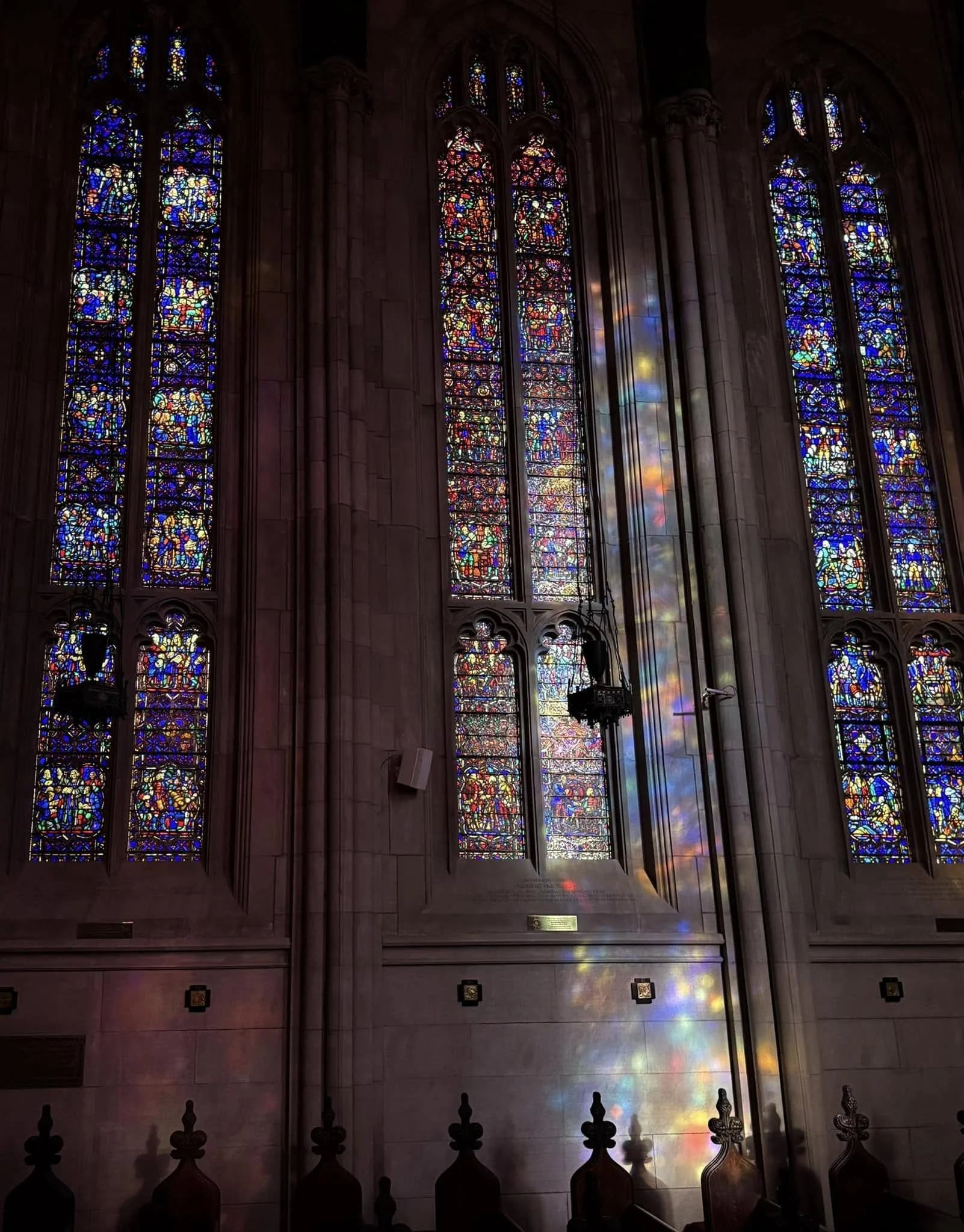
God’s Glass
The Stained Glass of Washington Memorial Chapel

The Founding of Washington Memorial Chapel
The deep respect for George Washington and his leadership, bold vision, and fierce determination of a young Episcopal priest established a private Episcopal Church on 45 acres in the midst of the 3,500 acre National Park at Valley Forge.
The Centennial Celebration and World’s Fair of 1876 launched the Colonial Revival Movement, a nostalgic fascination with colonial domestic life and the Revolutionary War. The revival sparked interest in the Valley Forge encampment site and experience. It prompted a local historical organization, the Centennial and Memorial Association of Valley Forge, to convince the Pennsylvania legislature to pass a bill in 1893 declaring the encampment area a state park and establishing the Valley Forge Park Commission. It began with a modest plan of several hundred acres just east of Valley Creek. By 1976 the park had expanded to 3,500 acres and was designated a National Park.
The Rev. Dr. W. Herbert Burk was rector of All Saints Church in Norristown, just east of Valley Forge. In the fall of 1902, he brought his choir boys to Valley Forge, to help them learn about George Washington and the Continental Army. He found trees, meadows, and a picnic area, but nothing that indicated that twelve thousand men had wintered there in 1777-78 and two thousand men died from smallpox, flu, and other illnesses. Apparently moved both by his limited knowledge of the Valley Forge experience for the Continental Army and by his deep respect for George Washington, Burk announced from his All Saints Church pulpit on Washington’s birthday in 1903 that he was going to build a wayside chapel in the park as a place to worship God and a memorial to George Washington and the Continental Army.
Burk’s bold vision would prove to be challenging to become reality with over 50 years needed to build most of what he envisioned not only as a Chapel, but also what he hoped would be a shrine. Burk’s vision to tell the story of the nation’s history and George Washington’s role in it generated many ideas and projects that affected the focus of construction. And he not unexpectedly faced funding challenges and also encountered a variety of local civic and government challenges working with the Valley Forge Park Commission.
Following his announcement Burk began by holding services in local meeting halls until he acquired several acres of land donated by I. Heston Todd, a local farmer who owned land at the eastern edge of the state park. After a cornerstone was laid on June 19, 1903, 125 years after Washington and his army had departed Valley Forge, Burk began fundraising and building in earnest.
A temporary barnboard building was erected in which to hold services while Burk began to raise money by contacting schools, churches, choirs, and individual donors. The University of Pennsylvania department of architecture sponsored a design contest. For the design, Burk envisioned both a church and memorial: a church flanked on the west by a thirteen bay cloister and on the east by a connecting porch, museum and meeting hall, and bell tower. The judging committee selected the work of Milton B. Medary, Jr., a Philadelphia architect. Medary chose the architectural form of “Perpendicular Gothic,” a style that imitates the English Gothic architecture of the late 14th century to early 16th century. It is characterized by tall perpendicular lines in walls and windows, large windows, intricate stonework, and flying buttresses.
The next ten years building brought intermittent progress, delays, and additional ideas to support the concepts of a shrine and a memorial:
Burk envisioned a museum to aid in telling the story of the American revolution and Valley Forge, and he founded the Valley Forge Historical Society to support his museum efforts. He collected artifacts, objects, and documents which inevitably needed more space and affected the design of the complex on the east side of the Chapel.
As construction started on Patriots Hall in 1908, the Chapel also decided it needed a cemetery and Burk arranged for Thomas Sears, a nationally known landscape architect to design it. The cemetery had its first interment in 1911.
In 1911 Burk began construction of a complex of buildings that were to serve as a west entrance to the cemetery. Called Defender’s Gate it was intended to honor those who defended the Union in various conflicts. It was to be a stone porter’s lodge, an arch over the driveway, and a waiting room. The arch and waiting room were never completed.
The first bay in the cloisters on the west side of the Chapel dedicated to Pennsylvania was completed in 1906, but another 20 years would be needed to acquire the funding and complete the construction of the remaining twelve.
Despite the above projects being undertaken, by 1912 the Chapel walls remained just to the height of the sills of the planned windows. Recognizing the need for better management, the sponsoring Episcopal Diocese began exercising more control over ownership of the site and construction and established a fundraising committee to push for completion of the Chapel. The committee consisted of two bishops and the former provost of the University of Pennsylvania, Charles Custis Harrison. Harrison had been an effective fundraiser for the university due to his in-person approach and access to wealthy Philadelphia area donors. He was able to raise sufficient funds within three years to roof over the Chapel by 1915 and complete it by 1928.
A further overview of other parts of the complex as constructed reveals the grand scope of the entire project. As the museum collection grew and required more space, Patriots Hall was redesigned into three rooms and in 1915 a log cabin was constructed just north of the Chapel to house the Sunday school and serve as a tea room. In 1926 a temporary structure of wood and steel was built to house a thirteen bell carillon. In time this would give way to the 110 foot tall permanent bell tower for a fifty-eight bell carillon connected to the Chapel by the Porch of the Allies. This construction, begun in the 1940’s, was not completed until 1953 because of the Second World War. Another enhancement to Burk’s original design is the Bishop White Memorial Library attached to the north side of the church, begun in 1931 and completed in 1937.
It has been said that Burk intended to blend patriotism and religion together in his artistic and architectural ideas for the Chapel because he believed the Revolutionary War was successful due to the Providence of God on one hand and the self-sacrifice of men on the other. Washington Memorial Chapel and its campus reflect the bold vision and fierce determination of the Rev. Dr. W. Herbert Burk and manifests in inspiring beauty both Washington’s and Burk’s belief in God’s Providence and its role in the success of our nation.
KRD
The Vision
Faith, Freedom & the Founding of a Nation in Glass
Step into Washington Memorial Chapel and witness a vivid story told in stained glass. Conceived by The Reverend W. Herbert Burk, the founder of the Washington Memorial Chapel, and crafted by Nicola D’Ascenzo, these thirteen windows illuminate the intertwined legacy of Christianity and American liberty. Each window offers a rich visual and spiritual journey through history, theology, and nationhood.
Explore stained glass as a window into faith, sacrifice, and liberty.
These windows are glorious with the colors of heaven and they record the story of faith and hope and love….back of them are the miracles of Providence more wonderful by far than anything which man has planned or wrought.
—The Reverend W. Herbert Burk (1929)
Nicola D’Ascenzo
Stained Glass Master
From immigrant apprentice to renowned stained glass visionary, Nicola D’Ascenzo brought beauty, history, and faith to life through the windows of Washington Memorial Chapel and beyond.
Discover the Visionary Who Brought God’s Glass to Life
Featured Window:
The George Washington Window
The George Washington window honors the enduring legacy of our nation’s first president, depicted in reverent detail and vibrant stained glass. A symbol of leadership, faith, and resilience, the window connects visitors to the spirit of Valley Forge and the birth of American freedom.
Explore God’s Glass
Make a donation.
allow the light of history and faith to shine through every pane.
The beauty and history portrayed in the stained glass windows of the Washington Memorial Chapel lives on through the generous contributions of donors. Please consider making a donation to the Stained Glass Fund or including Washington Memorial Chapel in your estate planning.
How to Donate
Donate Online
To donate online using the QR code or Donate button:
Enter the amount you wish to donate.
Click on the Fund dropdown menu.
Scroll to the bottom of the list.
Select “Stained Glass” to ensure your gift is directed correctly.
Donate by Check
Donations can also be made by personal check:
Make payable to “Washington Memorial Chapel”
Include “Stained Glass” in the memo section
Mail to PO Box 98, Valley Forge, PA 19481
Estate Planning
For assistance with estate planning naming the Washington Memorial Chapel, please contact treasurer@wmchapel.org.
God’s Glass Committee — Washington Memorial Chapel
Washington Memorial Chapel gratefully acknowledges the dedication and contributions of the God’s Glass Committee, whose efforts have made it possible to create these webpages and other products showcasing the stained glass of Washington Memorial Chapel:
Diane Custer Smith, MD, DFAPA – Chair
Gardiner Pearson – Co-editor
Kenneth R. Dauscher – Co-editor
Nathan K. Hillanbrand
David R. Smith, MD
Frederick P. Smith
John R. Wallace
© Text copyright of Washington Memorial Chapel and courtesy of the God's Glass Project.
© Photos copyright of Sam Cornwall, licensed exclusively to Washington Memorial Chapel and courtesy of the God's Glass Project.
Unauthorized sharing or distribution of text or images from this website is strictly prohibited without written permission from the copyright holders.
